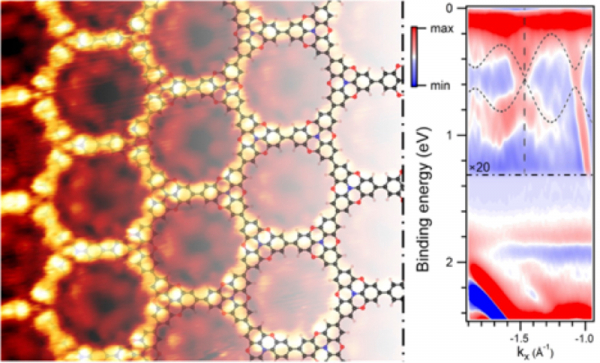In practice, a new 2D polymeric material was created with a degree of order never achieved before, transforming what had previously only been theorized into reality. These polymers have a k kagome ’structure, the same as the Vienna straw chairs that can be found in many Italian homes, and have electrical conductivity characteristics similar to those of graphene. They can be considered post-graphenic materials: the technique used for their synthesis allows the constituent 'bricks' (monomers) to be changed and their characteristics in concert, in order to obtain a wider use. The possible applications are in fact many, from the creation of 2D polymers for organic electronic devices used in displays, smartphones, sensors and solar cells to that of porous nanopolymers for the absorption of harmful gases and biocompatible surfaces for applications in nanomedicine, among others. . These materials, as theoretically predicted, have properties that adapt to modern electronics, allowing the reduction of heat production in chip design. Their integration into a device (for example, transistor) can lead to exceptional performance. In 2004, the isolation of graphene took the world by surprise and was imagined to revolutionize modern electronics. It was soon understood that its intrinsic properties limit its use in commonly used electronic devices. To look “beyond graphene,” scientists studied a wide variety of inorganic two-dimensional systems with similar structures, and - from the encounter between polymer chemistry and surface physics - obtained new 2D polymers. However, problems such as low crystallinity and the presence of defects in the structures obtained prevented their experimental characterization, and the study of such polymers remained only theoretical for a long time. The band structure of the polymer obtained by the Italian-Canadian team reveals both flat bands and a Dirac cone, confirming theoretical predictions. The observed coexistence of both structures is of particular interest: while the Dirac cones indicate massless charge carriers, necessary for technological applications, the flat bands extinguish the kinetic energy of the charge carriers and could give rise to phenomena extremely interesting such as surface superconductivity, superfluid transport or anomalous Hall effect. The results will promote further studies on a wide range of two-dimensional polymers with different lattice symmetries, thus obtaining further information on the connection between structure and properties. These materials could then be used both for their intrinsic properties and to be joined with other materials to form heterostructures. The research was partly supported, for the Italian part, by a Great Relevance Italy-Quebec project of the Ministry of Foreign Affairs and International Cooperation (Maeci), Directorate General for the Promotion of the Country System.
Polymers beyond graphene
In an article published in Nature Materials, an Italian-Canadian team involving the Institut National de la Recherche Scientifique (Center Energie, Matériaux et Télécommunications), McGill University and Lakehead University and the SAMOS (Self-assembled materials on surfaces) laboratory led by Giorgio Contini, researcher at the Institute of Matter Structure of the National Research Council (CNR-ISM), describes the synthesis of two-dimensional conjugated polymers on a large scale, similar to graphene but with better applicative properties especially in the electronic field. The research work also involved other ISM students and researchers such as Gianluca Galeotti, Dominik Dettmann, Asish K. Kundu, Luisa Ferrari, Paolo Moras, Polina Sheverdyaeva.


 English (UK)
English (UK)  Italiano (Italia)
Italiano (Italia)